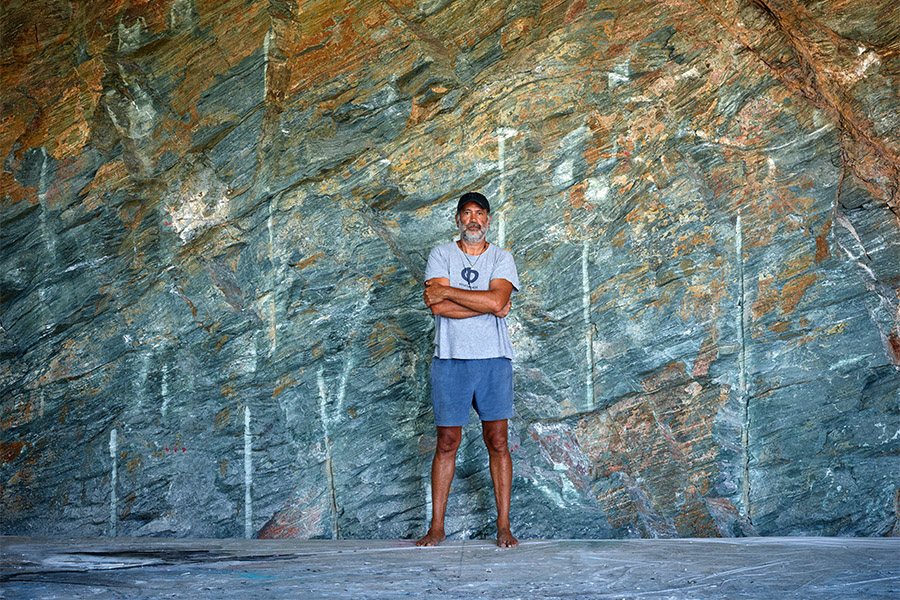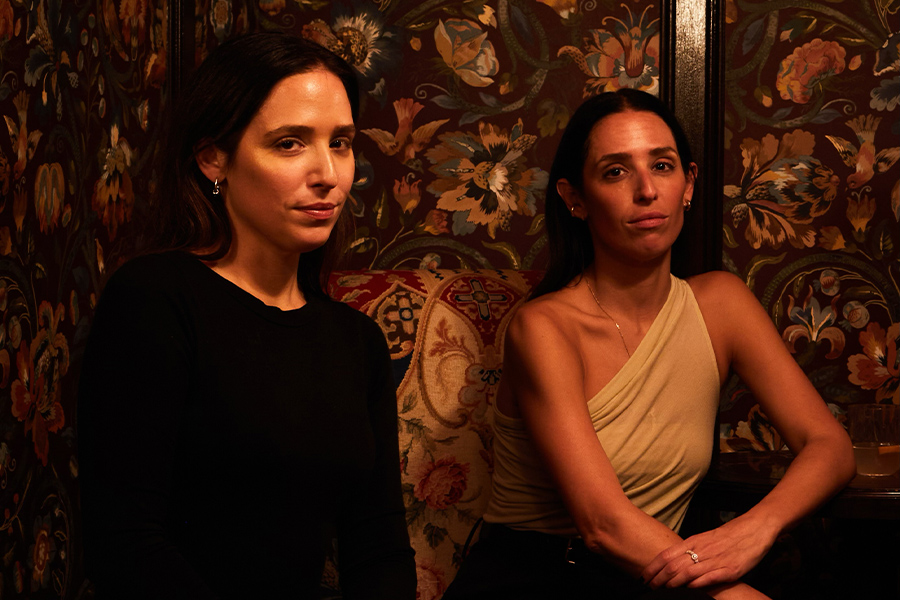At the age of 14, artist Heather Chontos lost her vision, and when she fortunately regained it a year later, she emerged from that harrowing period with a profound clarity that continues to guide her. “My visual world is so important to me. I manipulate it and change it all the time so that it feels a certain way,” she says.
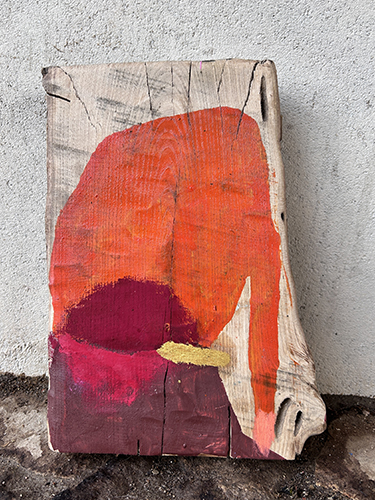
Wood plays a starring role in Chontos’ abstract art pieces
Chontos knows when something is amiss, and almost immediately she rectifies the situation. For instance, she studied art history and conservation at University College London but veered off that track because “I was tired of people theorizing,” she recalls. “I felt like I had this great base of knowledge, but I wanted to make things instead.”
That’s what she did, establishing herself at turns as a prop stylist, set designer, art director, and illustrator, organically moving between the realms of fashion, interiors, and food for numerous international publications and brands.
Drawing and painting were hobbies that brightened Chontos’ childhood in New York’s Hudson Valley, where she was raised by her carpenter father and antiques dealer mother who had a penchant for crafting. “She was the queen of stenciling,” Chontos remembers.
Those formative pastimes offered a glimpse of Chontos’ future, because now her career is centered on art, largely painting abstract works—with plastic cards rather than brushes—in the Portuguese countryside where she currently resides. “I started out slowly and then it consumed me because it felt exactly like what I was supposed to be doing” she explains. “When people asked me what my job was at parties, I started to say artist, just to see what happened.”
What happened is that she combined talent with her hustle mindset, those years of alternating vulnerability and resilience dragging her portfolio around to potential clients. Then, like now, she never knew if people were going to respond positively to what she showed them, preparing her well for her journey into fine arts.
Her paintings seamlessly translate to textiles and wallcoverings, and Pierre Frey has called upon her for both, including the pattern La Toile du Peinture, a reimagining of one of her graphic compositions used to swath Ligne Roset’s Togo loveseat, a limited edition piece celebrating the iconic sofa’s 50th anniversary in 2023.
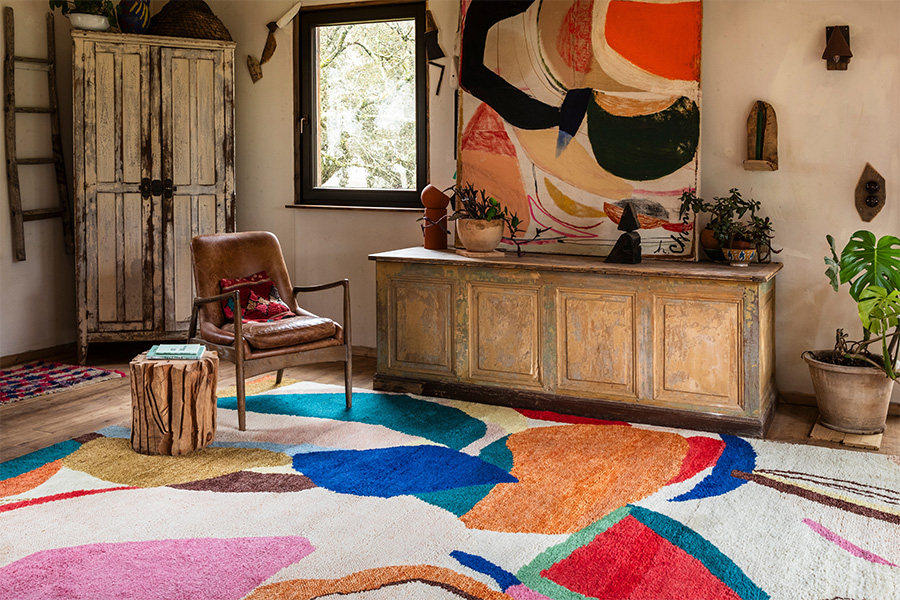
Chontos’ paintings served as inspiration for her three-piece rug collection with Layered
Most recently, Chontos was courted by Swedish design brand Layered, which reinterpreted three of her paintings culled from various periods into vibrant handknotted New Zealand wool rugs—Kaleidoscope, Collage, and Blue Lake—that “are so respectful of my original work,” Chontos points out. “They even handwashed different areas of the dyes so that you get this tonality. I’ve never seen anything so beautifully produced.”
Found materials like wood play a starring role in Chontos’s creations, stemming from her affinity for treasure hunting in flea markets. She’s particularly excited about a recent find—antique flour sacks woven from white linen that she’s stitching together to build large canvases. “The patches sewn on them are perfect because they’re imperfect,” she says. “They weren’t mass produced in a factory but made because there was a hole and flour was falling out. I like that there’s history to these things.”
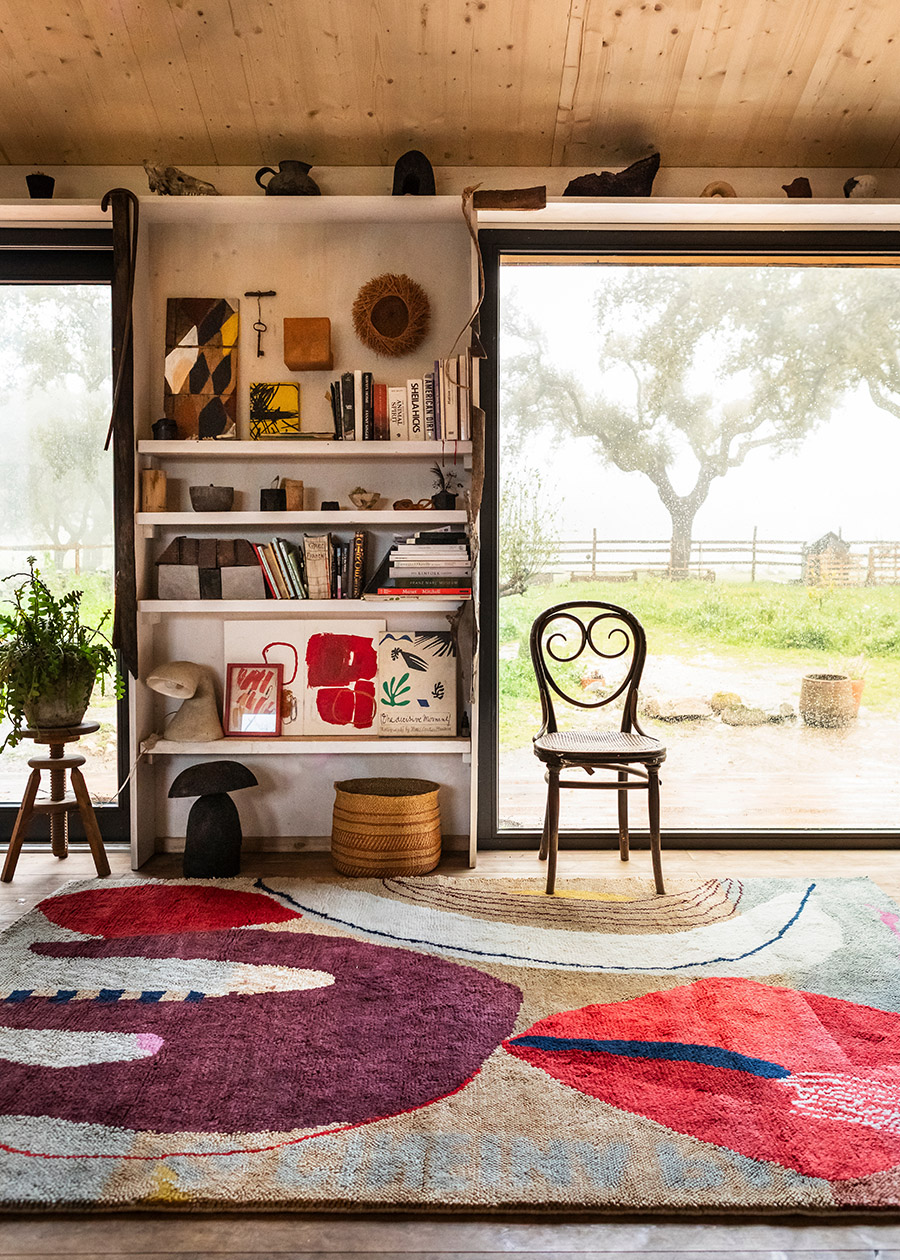
The Collage rug for Layered is based on Chontos’ work created from torn movie posters from old French magazines
This article originally appeared in HD’s August 2025 issue.

